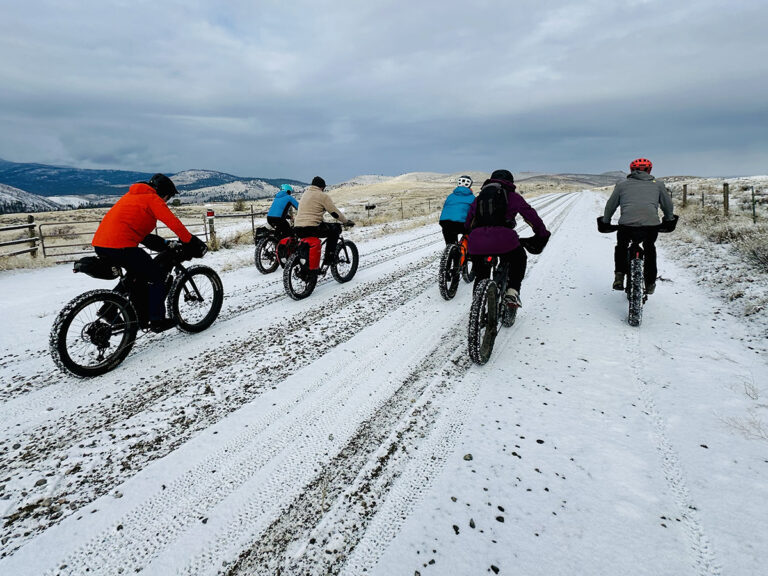Blake Sommers may only be 19 years old, but he’s already becoming a semi-advanced rock climber after two and a half years, since a buddy introduced him to the sport. His secret: time. Time to go climbing two to three times a week, either at Deep Creek in Riverside State Park or Dishman Hills during the summer, or at Wild Walls climbing gym during the winter.
Aside from getting him outside, Blake enjoys that rock climbing is about “overcoming something so hard, celebrating for a few seconds, and then moving on to another challenge,” he says. “It’s so fun and is an easy way to work out, versus going to the gym and lifting weights over and over.”
Last summer, he worked diligently—three hours a day, 3-4 days a week—to master a 70-foot climbing route at Deep Creek with a difficulty rating of 5.12b. “I understood what moves I had to do; it was about finding the strength to do [them],” he says. “It’s about finding a way to make the hard move possible and go from there.”
Blake’s climbing goal this season is to finish that route and then attempt a few more 5.12 routes, which he describes as “the bottom end of advanced.” To put the Deep Creek route’s difficulty in perspective, a rating of 5.0 is the easiest climb and 5.15 is the hardest climb in world, he says.
His all-time favorite place to climb is Smith Rock in Oregon, which is a state park about 20 minutes outside of Bend. “It’s kind of the mecca of climbing,” he says. “It feels like you could climb there every day for a month and a half and still not complete anything.”
Blake spent two weeks at Smith Rock with a friend last summer. “It’s tough to climb there in the heat of summer. My climbing shoes started to melt once—I looked down and my shoe left a little black smear. So you have to climb in the morning or late in the day,” he says.
Blake enjoys introducing people to the sport. He takes friends to Q’Emiln Riverside Park in Post Falls for their first attempts, and he has volunteered as a trip leader for Peak 7 Adventures—taking groups of 9-10 youth to climb at Minnehaha. And when he’s not climbing, he likes to whitewater kayak, backpack and ride his dirt bike.
Here is the rock climbing gear that Blake uses.
HARNASS: Black Diamond Momentum, which he describes as “cheap and fairly comfy.”
BELAY DEVICES: Petzl ATC, Petzl ATC XP (has features for multi-pitch and an autolocking feature), and Trango Cinch.
ROPE & ROPE BAG: New England Apex 10.5mm (60m) and Notorious Dirt Bag.
HELMET: He doesn’t wear a helmet for sport climbing, but says he would wear one for “multi-pitch stuff.” And he’s worn one a few times when he’s lead climbing; however, he doesn’t personally own one. “At Deep Creek, most falls are into air,” he says, rather than against the rock wall. “I’ve not hesitated at all to put a helmet on when the risk of falling is greater.”
CHALK & CHALK BAG: Joshua Tree Herbal Chalk (cinnamon scent) and Evolv chalk bag.
CARABINERS: He uses three different brands—Omega Pacific Dirt Bag (“They’re cheap and they work well, but they’re kind of heavy,” he says), Mad Rock and Alpine Draw.
CLIMBING SHOES: La Sportiva Miura VS, which he says is best for the type of “aggressive climbing” that he does at Deep Creek.
BACKPACK: Mountain Hardware Splitter Pack. He says it “makes an unorganized person like myself very organized” because of its built-in tarp, gear loops and many pockets.
CLOTHING: “Climbing specific clothes are a great way for REI to sell products,” Blake says. He’s not interested in climbing fashion; rather, if something dries quick and is stretchy, he’ll consider wearing it. He says, “When it’s cold, I wear Carhartts® [pants]. It saves my legs from getting destroyed and they last forever. During the summer, my outfit consists of my shoes and prAna® shorts. [No shirt.] During springtime, when it’s still cold, I’ll wear synthetic pants with a gusseted crotch.” He never wears jeans and a cotton t-shirt.
MISCELLANOUS: Petzl Tibloc (semi-mechanical ascending device for the rope); Mammut Dyneema 8-foot loop for making an anchor (“It’s thin but extremely strong,” he says).











